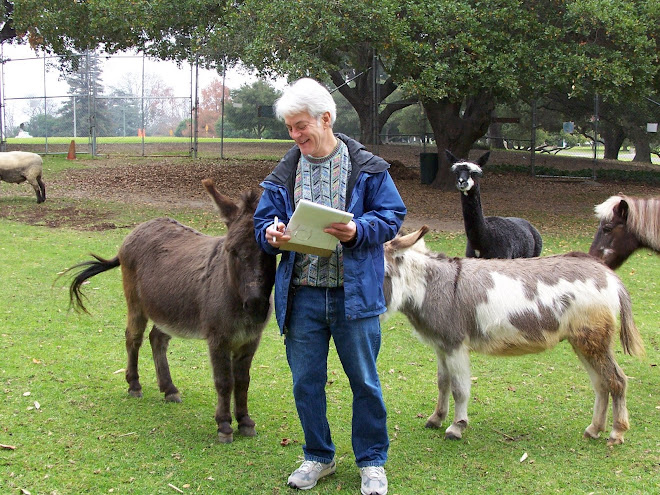UC Berkeley lost one of its greatest
teachers and the art world lost one of its greatest scholars when James Cahill,
Professor Emeritus of the History of Art and former Chair of the Art History Department,
died on Feb. 14 at age 87.
Cahill, who won both the
prestigious Distinguished Teacher Award from Cal and the Distinguished Lifetime
Achievement Award for Writing form the College Art Association, was highly
regarded for his expertise in Asian art, especially Chinese art – not only in
the west, but in China, too, where all of his books have been translated into
Chinese.
"He treated us as if we were
his colleagues, not his students," said Patricia Berger, who succeeded him
as Chair of the Art History Department when he retired in 1995. "And as a
lecturer, he was phenomenal. He'd come in with a handful of notes, which he
never consulted, and deliver lectures that were coherent from beginning to end.
He must have kissed the Blarney Stone."
He had a lack of pretentiousness
that was utterly charming. Despite his worldwide fame, he insisted that
everyone call him "Jim," not "Professor Cahill," and everyone
dutifully complied – at least, to his face. Behind his back, they reverently
called him "Professor Cahill" or "our sensei."
It's the old Zen paradox: The more
he rejected the trappings of fame, the more they adored him for it.
Many universities tried unsuccessfully
to lure him away. Harvard offered him its most prestigious chair, a University
Fellowship, which is widely regarded as the pinnacle of the academic
profession. But he turned it down, the first person to do so since Galileo.
"I didn't want to leave
Berkeley," he explained to me a few years ago. "I like the way the
university and the community interconnect. For some people, that's what's wrong
about Berkeley. But for me, it's what's right."
Cahill was not only a great
scholar, he was a great collector. Most of his collection of Chinese paintings
– one of the finest private collections in the world – has been donated to the
University Art Museum. He also collected rare phonograph records, which he
played on his weekly radio show on KPFA.
But the collection I'd give my
right arm for is something I'd seen in reproductions but never before in original
form – his complete collection of early, pre-Alfred E. Neuman Mad Magazines,
the ones in comic book format. (My favorites are "Superduperman" and
"Batboy and Reuben.")
As modest as he was about his
accomplishments, he was extremely proud of his children. His eldest son, Nick,
is Professor of Art History at Wisconsin and senior archaeologist at the dig at
Sardis in western Turkey, where he and his team are unearthing the palace of
King Croesus of Lydia.
His daughter, Sarah, a concert
pianist specializing in new American music and the American experimental tradition,
has had works composed for her by such luminaries as John Adams and Terry
Riley.
He also leaves two college age
sons: Ben, a chemistry major at Cal, and Julian, a film student at NYU. And all
four kids have inherited his independent spirit.
"My father was an advocate for
lesser known, out-of-the-mainstream artists, and that's what I do with my
music, too," says Sarah. "So I'm carrying on his tradition in my own
way."
















